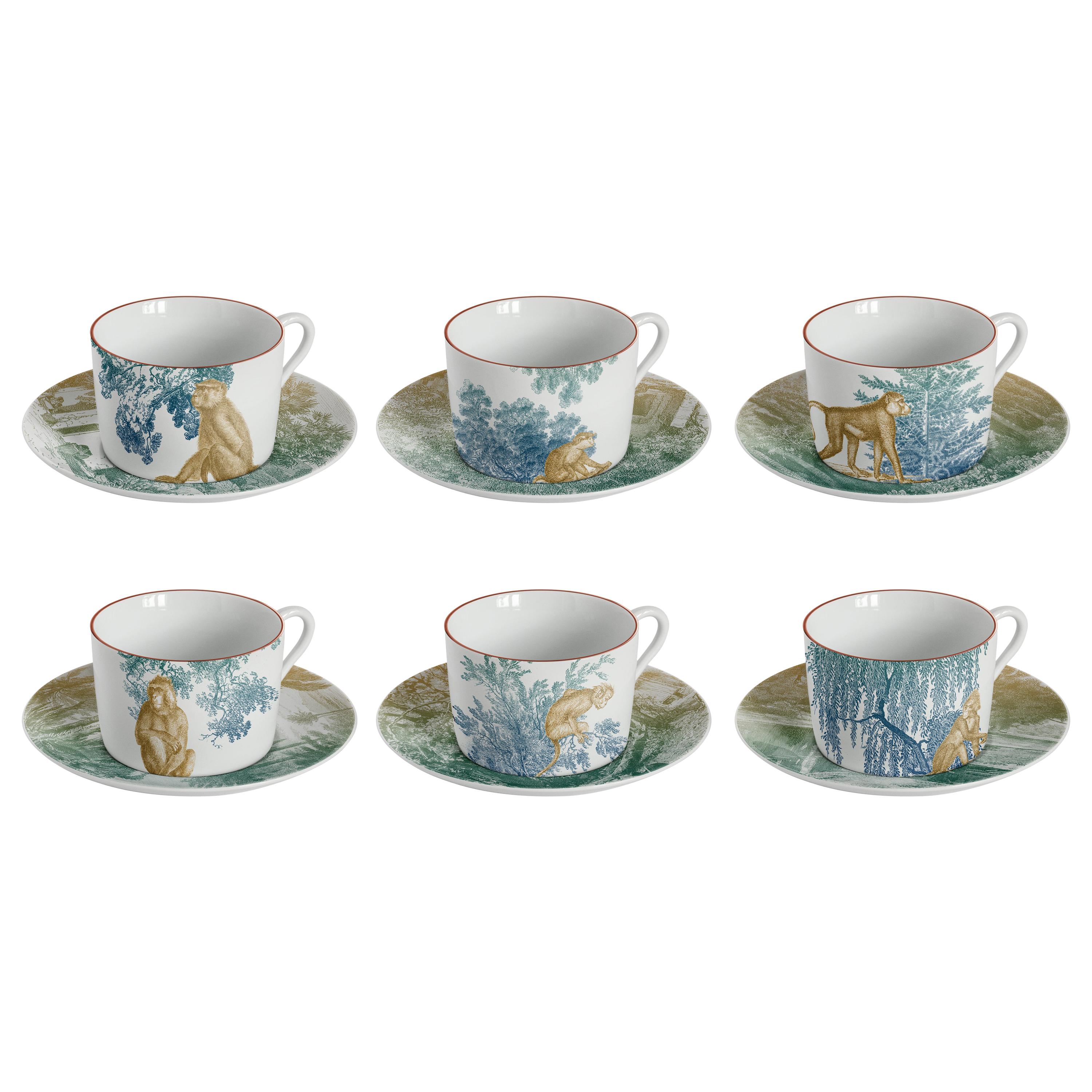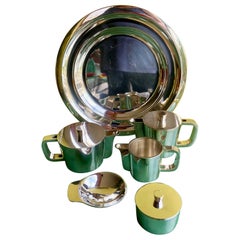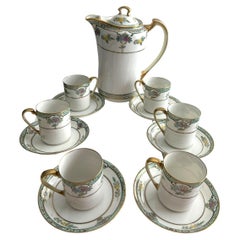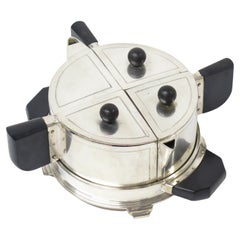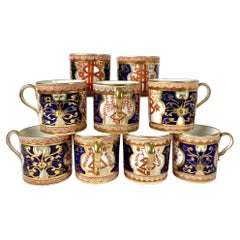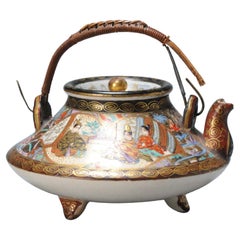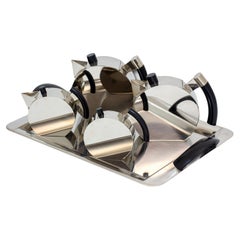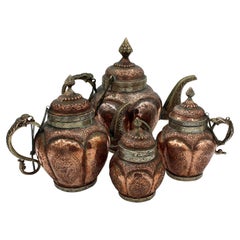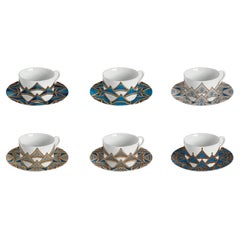Tea Sets
19th Century Japanese Antique Tea Sets
Porcelain
20th Century Italian Mid-Century Modern Tea Sets
Metal
19th Century Indian Anglo Raj Antique Tea Sets
Silver, Copper
Mid-20th Century Japanese Victorian Tea Sets
Porcelain
Early 19th Century English Regency Antique Tea Sets
Porcelain
2010s Italian Tea Sets
Porcelain
2010s Argentine Organic Modern Tea Sets
Metal
2010s Italian Baroque Tea Sets
Ceramic
Mid-20th Century Moroccan Moorish Tea Sets
Metal, Silver Plate, Brass
21st Century and Contemporary Chinese Modern Tea Sets
Porcelain
21st Century and Contemporary Chinese Modern Tea Sets
Porcelain
21st Century and Contemporary Chinese Modern Tea Sets
Porcelain
20th Century British Other Tea Sets
Ceramic, Porcelain
1870s Antique Tea Sets
Sterling Silver
Early 20th Century Ming Tea Sets
Porcelain
1780s English George III Antique Tea Sets
Porcelain
2010s Argentine Organic Modern Tea Sets
Metal
Mid-20th Century Moroccan Moorish Tea Sets
Brass, Bronze
20th Century American Tea Sets
Sterling Silver
20th Century Italian Mid-Century Modern Tea Sets
Metal
1960s German Mid-Century Modern Vintage Tea Sets
Porcelain
1770s English Rococo Antique Tea Sets
Porcelain
Early 1900s French Art Deco Antique Tea Sets
Porcelain
Early 19th Century English Antique Tea Sets
Porcelain
1790s English George III Antique Tea Sets
Porcelain
1810s English Regency Antique Tea Sets
Porcelain
1950s Vintage Tea Sets
Late 19th Century English Antique Tea Sets
Gold
Early 20th Century Victorian Tea Sets
Silver Plate
Late 18th Century Japanese Antique Tea Sets
Enamel, Copper
Late 20th Century Italian Tea Sets
Sterling Silver
Mid-19th Century French Antique Tea Sets
Sterling Silver
20th Century North American Art Deco Tea Sets
Silver Plate
1920s French Art Deco Vintage Tea Sets
Metal, Silver Plate
1820s Antique Tea Sets
Porcelain
1840s British Victorian Antique Tea Sets
Sterling Silver
Late 19th Century British Empire Antique Tea Sets
Silver Plate, Stainless Steel
Mid-19th Century Polish Rococo Antique Tea Sets
Silver Plate, Brass, Copper, Stainless Steel
19th Century English Georgian Antique Tea Sets
Sterling Silver
Early 20th Century American Edwardian Tea Sets
Sterling Silver
1930s Russian Baltic Vintage Tea Sets
Porcelain
Mid-19th Century Japanese Antique Tea Sets
Porcelain
Early 20th Century American Edwardian Tea Sets
Sterling Silver
1980s Italian Vintage Tea Sets
Ceramic
1960s Mid-Century Modern Vintage Tea Sets
Ceramic
1950s North American Vintage Tea Sets
Ceramic
19th Century English Victorian Antique Tea Sets
Ceramic
Mid-20th Century French Mid-Century Modern Tea Sets
Enamel
1960s French Mid-Century Modern Vintage Tea Sets
Ceramic
20th Century Russian Tea Sets
Porcelain
1950s Italian Mid-Century Modern Vintage Tea Sets
Ceramic
Early 20th Century French Art Deco Tea Sets
Sterling Silver
1930s English Art Deco Vintage Tea Sets
Pottery
Early 20th Century Bohemian Tea Sets
Porcelain
1810s English Regency Antique Tea Sets
Porcelain
19th Century Japanese Antique Tea Sets
Porcelain
19th Century American Aesthetic Movement Antique Tea Sets
Silver Plate
1780s English George III Antique Tea Sets
Porcelain
Antique, New and Vintage Tea Sets
Ready to serve high tea and brunch for your family and friends? Start with the right antique, new or vintage tea set.
Tea is a multicultural, multinational beverage and isn’t confined to any particular lifestyle or age group. It has humble beginnings, and one of its best-known origin stories places the first cups of tea in 2700 B.C. in China, where it was recognized for its medicinal properties. Jump ahead to 17th-century England, when Chinese tea began to arrive at ports in London. During the early 1800s, tea became widely affordable, and the concept of teatime took shape all over England. Today, more than 150 million people reportedly drink tea daily in the United States.
Early tea drinkers enjoyed their beverage in a bowl, and English potters eventually added a handle to the porcelain bowls so that burning your fingers became less of a teatime hazard. With the rise in the popularity of teatime, tea sets, also referred to as tea service, became a hot commodity.
During Queen Victoria’s reign, teakettles and coffeepots were added to tea services that were quite large — indeed, small baked goods were served with your drink back then, and a tea set could include many teacups and saucers, a milk pot and other accessories.
During the early 1920s, a sterling-silver full tea service and tray designed by Tiffany & Co. might include a hot-water kettle on a stand, a coffeepot, teapot, a creamer with a small lip spout, a waste bowl and a bowl for sugar, which the British were stirring into tea as early as the 18th century.
But you don’t have to limit your tea set to Victorian or Art Deco styles — shake up teatime with an artful contemporary service. If the bold porcelain cups and saucers by Italian brand Seletti are too unconventional for your otherwise subdued tea circle, find antique services on 1stDibs from Japan, France and other locales as well as vintage mid-century modern tea sets and neoclassical designs.
